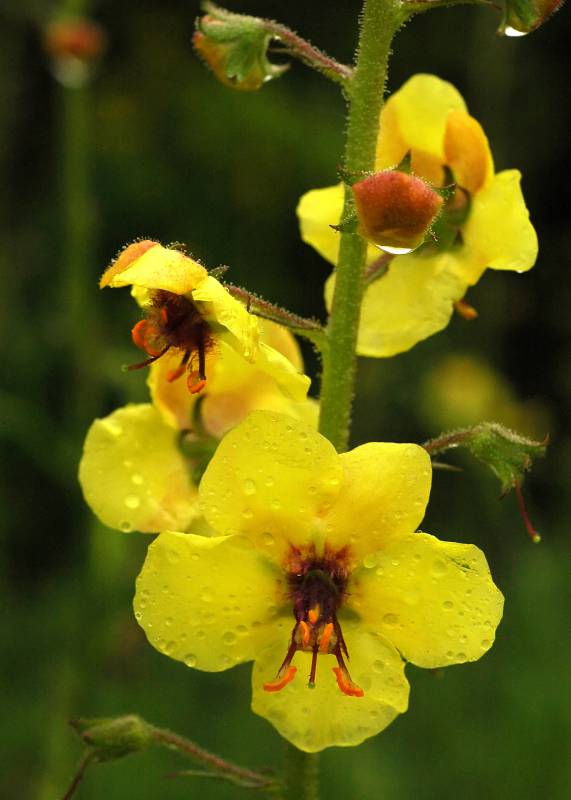Verbascum blattaria
Verbascum speciosum
moth mullein
Basal leaves broadly oblanceolate, 5-15 cm. long and 1-3 cm. wide, tapering to a short petiole, toothed and often lobed;
cauline leaves alternate, numerous, reduced upward, becoming sessile and clasping, toothed but not lobed.
Inflorescence an open, elongate raceme;
pedicels 8-15 mm. long, much surpassing the lanceolate bracts;
calyx of 5 sepals;
corolla yellow or white, 2-3 cm. long, slightly irregular, 5-lobed;
stamens 5, all fertile, the filaments covered with purple-knobbed hairs.
Capsule ovoid-globose, 6-8 mm. high.
Verbascum blattaria
Verbascum speciosum
Occurring on both sides of the Cascades crest in Washington; British Columbia to California, east to the Atlantic Coast.
- Local floras:
BC,
CA,
OR,
WA
- Local Web sites:
CalFlora,
CalPhotos,
Flora NW,
PNW Herbaria,
Turner Photog.
WildflowerSearch
iNaturalist (observations)
USDA Plants Database
- LBJ Wildflower Center
- SEINet
- Plants of the World Online
- Encyclopedia of Life
- Wikipedia
- Google Image Search


